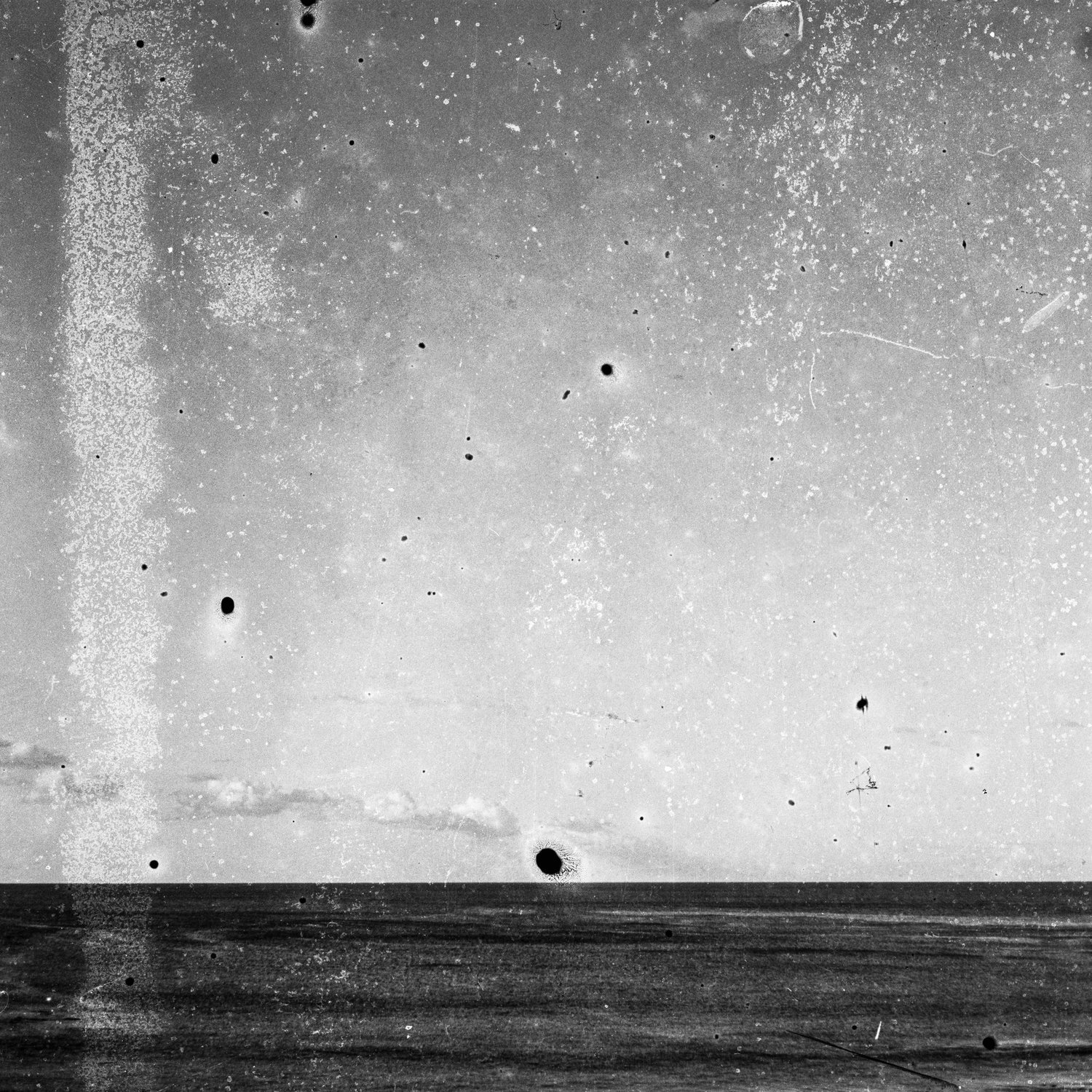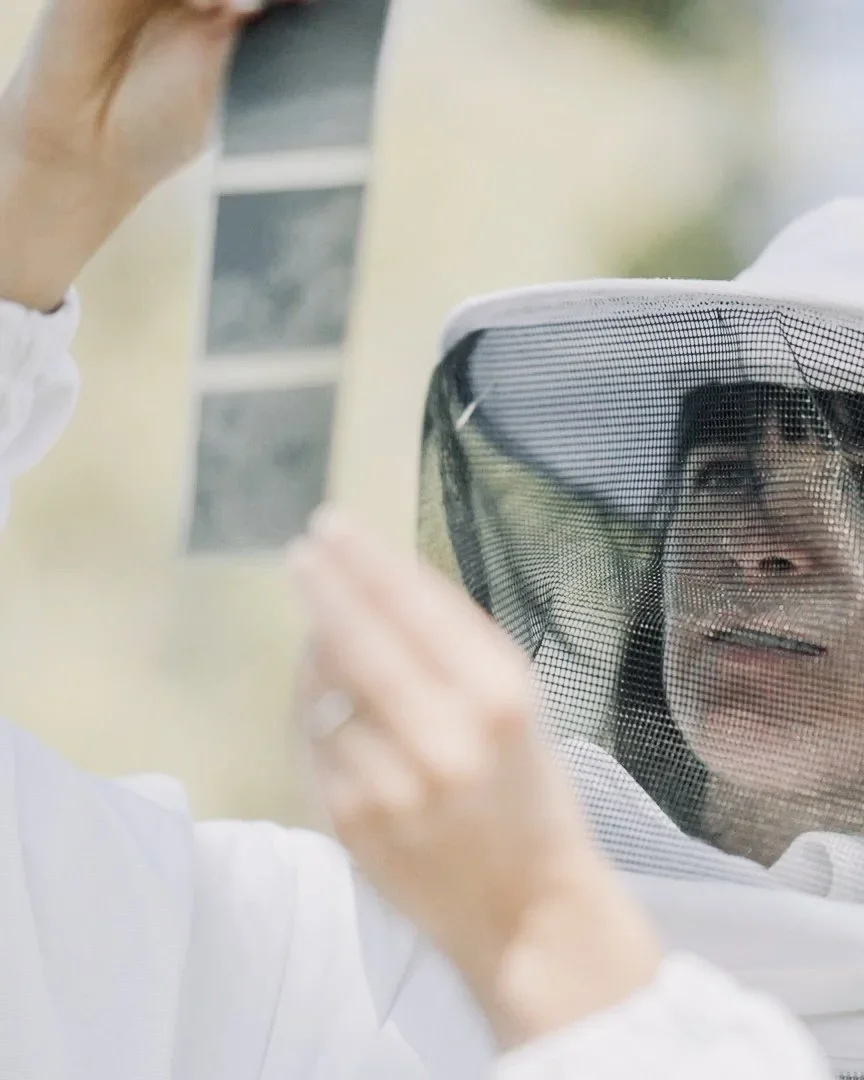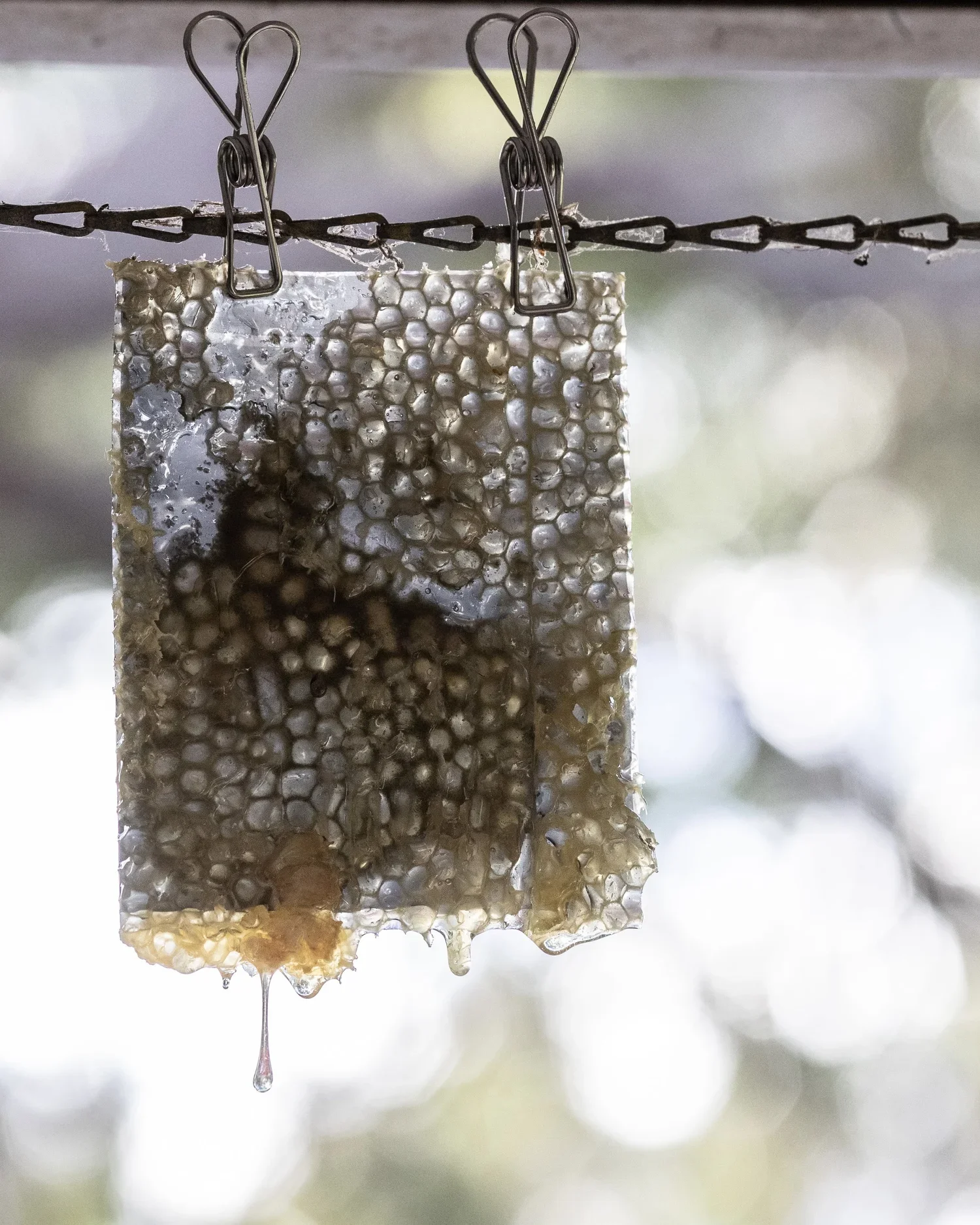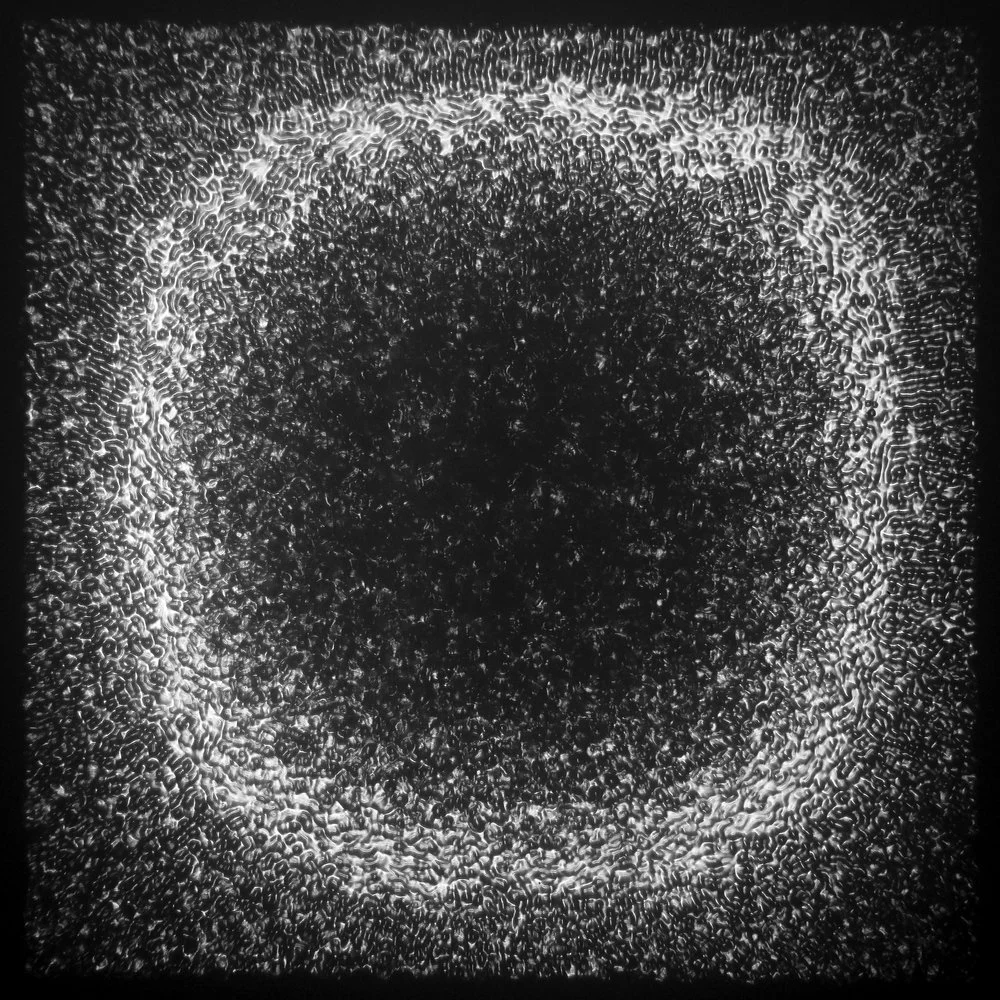“Through what she terms “facilitated acts of co-creation,” Hawker gives voice to places, materials, and the more-than-human world. Under her gentle guidance, whale song takes shape, ocean water becomes collaborator, salt crystals scatter themselves like stars across analogue film, and ashes murmur secrets onto silver nitrate-soaked paper.”
Art Guide Feature
Camilla Wagstaff
My practice explores the potential of interspecies dialogue. Through facilitated acts of co-creation my artworks give voice to the places, materials and more-than human beings I am working with. There are three main techniques I employ to co-create work - analogue photographic processing, where I engage water and other elements from a site to interact with the film; the process of chromatography which invites a teaspoon of organic material to express itself over silver nitrate-soaked paper; and cymatics which is the process of revealing the shape of sound.
Read more about Sammy’s approach to reciprocity and process here.
Humpback whale migrating south, 2024
Whale Song Cymatic Figure (Maia #4), 2025
“Sammy Hawker's photographs hum and crackle and whisper with a compelling sentience that evades most ordinary landscape images. But then Hawker's photographs are anything but ordinary...”
Art Collector Profile
Jo Higgins
With Nature | Canberra Contemporary Art Space
Image credit: Brenton McGeachie
Analogue Film Processing
I find myself intrigued by the materiality of analogue film and the possibilities this presents. I am interested in how the unpredictable results from more-than human agents can disrupt my authorial control over the image and break open the permanency of the photograph. When processing film with ocean water the corrosive properties of the salt lifts the silver emulsion and the representational image is rendered vague. However an essence of the site is introduced to the frame as fractals form on the horizon and crystals appear around the disappearing edges.
“Hawker has a very expanded idea of the studio. A set of open lipped glass jars for collecting water, lines of string for hanging negatives to dry in the wind, thick ragpaper, a wide brimmed hat and sturdy boots to clamber, a detailed diary of notes to record activity, a laptop and the cameras; the medium format 6x6 Mamiya C330 that forces the creation of a view by looking down into a reverse reflection and the large format 4x5 Linhof Technika.”
Salt, 2023 | Exhibition Essay
Virginia Rigney, Senior Curator CMAG
Near Rosedale, 2020
processing film with Kati Thanda-Lake Eyre | photo credit: Anna Hutchcroft.
Co-creating imagery with two hives of honeybees:
Conversation with bees | Goulburn Regional Art Gallery
Image credit: Silversalt Photography
6x6 negatives for the hives | photo credit: Rich Mockler
4x5 negative hanging in the studio
Chromatography
Chromatography is a photographic process invented in 1900 and commonly used by scientists to understand the chemical makeup of soil. I have has been testing the process’s capacity to facilitate the visual expression of a wide range of vibrant matter including trees, dead invertebrates and human ashes. The hues and patterns that form as the solution spreads over the silver nitrate-soaked paper cannot be predetermined or controlled. More about this process here.
“Sammy is less interested in showing the world as image and more interested in producing artefacts that are inseparably part of the world and which embody within them the forces of time and chemistry and light distinctive to particular places in the world. This is true of all her works, but perhaps most evident in her series of chromatograms, in which the ‘image’, if we can call it that, emerges as a direct, non-representational trace of the interactions of place-specific physicality as expressed in soils and waters.”
Acts of Co-Creation, 2021 | Exhibition Essay
Dr Kirsten Wehner, Director PhotoAccess
Cymatics
Cymatics (from Ancient Greek: κῦμα for 'wave') is the study of making sound and vibration visible. I have recently been working with Australian designer Sam Tomkins to develop a series of analogue cymatic instruments.
explain Chladni Plate
Cymatic Instrument vibrates to water.
More on this process here.
*download single frame video of Maia
Whale Song Cymatic Figure (Equinox #1), 2025
The artist acknowledges the Traditional Custodians of the lands and waters which on (and with) she creates her work. She extends this acknowledgement to all First Peoples of Australia and recognise their continual connection and care for Country. 5% (or more) of profits from Sammy’s artwork sales goes towards organisations supporting the vitality of Country.
Copyright © All rights reserved.












